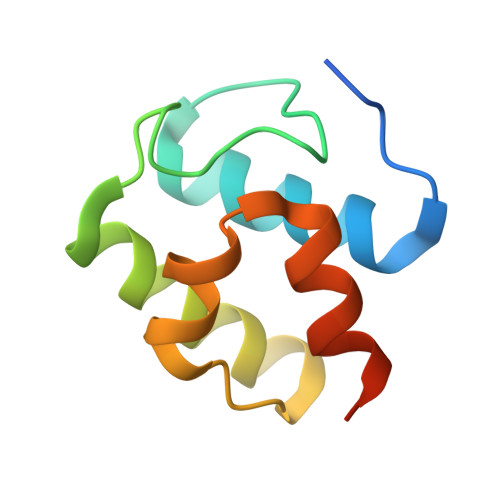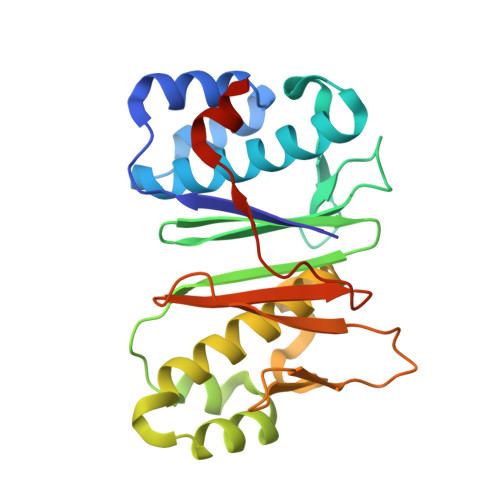Crystal Structure of a PCP/Sfp Complex Reveals the Structural Basis for Carrier Protein Posttranslational Modification.
Tufar, P., Rahighi, S., Kraas, F.I., Kirchner, D.K., Lohr, F., Henrich, E., Kopke, J., Dikic, I., Guntert, P., Marahiel, M.A., Dotsch, V.(2014) Chem Biol 21: 552-562
- PubMed: 24704508
- DOI: https://doi.org/10.1016/j.chembiol.2014.02.014
- Primary Citation of Related Structures:
2MD9, 4MRT - PubMed Abstract:
Phosphopantetheine transferases represent a class of enzymes found throughout all forms of life. From a structural point of view, they are subdivided into three groups, with transferases from group II being the most widespread. They are required for the posttranslational modification of carrier proteins involved in diverse metabolic pathways. We determined the crystal structure of the group II phosphopantetheine transferase Sfp from Bacillus in complex with a substrate carrier protein in the presence of coenzyme A and magnesium, and observed two protein-protein interaction sites. Mutational analysis showed that only the hydrophobic contacts between the carrier protein's second helix and the C-terminal domain of Sfp are essential for their productive interaction. Comparison with a similar structure of a complex of human proteins suggests that the mode of interaction is highly conserved in all domains of life.
Organizational Affiliation:
Institute of Biophysical Chemistry and Center for Biomolecular Magnetic Resonance, Goethe University Frankfurt/Main, Max-von-Laue-Strasse 9, 60438 Frankfurt, Germany; Buchmann Institute for Molecular Life Sciences, Goethe University Frankfurt/Main, Max-von-Laue-Strasse 15, 60438 Frankfurt, Germany.



















